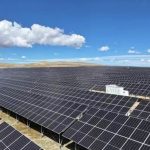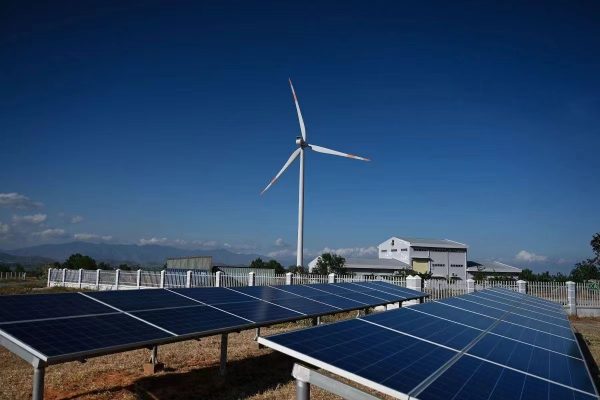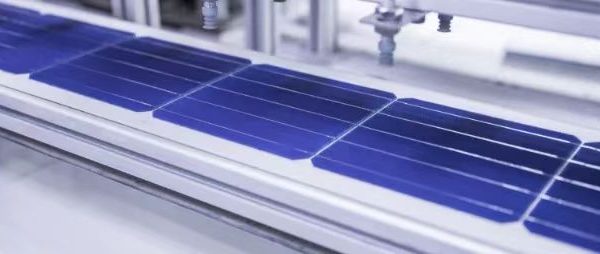As the global demand for sustainable energy solutions grows, small-scale photovoltaic (PV) systems combined with energy storage are becoming increasingly popular for residential, commercial, and industrial applications. These systems not only allow users to generate their own electricity from renewable sources but also help store excess power for later use, reducing dependency on the grid and providing backup power during outages.
One of the most efficient and scalable solutions in this space is the modular PV + storage system. These systems offer the flexibility to adapt to various energy needs, whether for homes, small businesses, or smaller industrial sites. However, successful installation requires careful planning and a clear understanding of the best practices to ensure maximum performance, safety, and reliability.
In this article, we’ll explore the key best practices for installing modular small-scale PV + storage systems, focusing on system design, installation tips, and ensuring long-term reliability and safety.
1. System Design and Planning
a) Assess Energy Requirements
Before proceeding with installation, it’s crucial to evaluate the energy needs of the site to determine the optimal system size. This includes analyzing energy consumption patterns, peak demand, and seasonal variations in energy use. A well-designed system must match these needs while considering:
- Daily energy consumption (kWh)
- Peak load (kW) during high-demand periods
- Desired autonomy (the number of hours of backup power required)
- Available roof or land space for the PV array
By conducting an energy audit and calculating the load profile, you can ensure that the system is properly sized for both the PV generation and the storage capacity to meet the energy requirements effectively.
b) Select Appropriate Modular Storage and PV Components
Modular storage systems are designed to be scalable, making them ideal for small-scale installations. When selecting components, consider the following:
- PV Panels: Choose high-efficiency modules, such as monocrystalline or polycrystalline panels, to ensure maximum energy output. It’s also important to select panels with a warranty of at least 25 years, ensuring longevity and performance.
- Battery Storage: The storage system should be modular to match the required capacity. Popular choices include lithium-ion batteries due to their high energy density, long cycle life, and efficiency. Select a battery with a deep discharge depth (DoD) to maximize the usable capacity.
- Inverters: Use a high-quality inverter to convert the DC electricity generated by the PV panels into AC electricity. Hybrid inverters with built-in battery management functions are ideal for small-scale PV + storage systems, ensuring seamless integration of both energy sources.
Ensure that all components are compatible with each other and meet the local grid regulations and standards for safety and compliance.
2. Site Assessment and Preparation
a) Roof or Ground Space Evaluation
One of the first steps in the installation process is to assess the space available for the solar array. For rooftop installations, ensure that the roof is:
- Structural sound and able to support the weight of the PV modules and mounting system.
- Free of shading obstacles such as nearby trees, buildings, or chimneys, which can significantly reduce solar efficiency.
- Positioned in an orientation that maximizes sunlight exposure. In the northern hemisphere, south-facing roofs are optimal, while east- and west-facing roofs may also work depending on the energy usage patterns.
For ground-mounted systems, select a location with ample exposure to sunlight and minimal obstructions. The installation site should be free from potential sources of damage or shadowing (e.g., trees, tall structures) and have a stable, level foundation.
b) Grid Connection and Backup Integration
If the system is designed to work in grid-tied mode, it’s essential to understand the local utility’s requirements for interconnection. Some key considerations include:
- Grid connection standards: Confirm that the inverter and energy storage system comply with local utility regulations for grid connection and synchronization.
- Backup power options: If the system includes off-grid capabilities, ensure that the battery storage is sufficient to meet the load requirements during grid outages. Consider adding a transfer switch to disconnect the grid during power failure.
Additionally, assess the access to electrical panels and cabling routes to ensure a smooth integration process.
3. Installation Tips
a) Optimize Panel Placement for Maximum Sun Exposure
Ensure that the PV panels are installed at an angle and orientation that maximizes their exposure to the sun. The ideal tilt angle depends on the latitude of the installation site, but a general rule is to tilt the panels to an angle equal to the latitude for year-round performance.
If possible, install the panels with a slight tilt to allow for better drainage of rain and to reduce the accumulation of debris. Ensure the spacing between panels allows for proper air circulation to avoid overheating, which could affect performance.
b) Proper Battery Installation and Safety
Battery storage should be installed in a well-ventilated area, protected from extreme temperatures and moisture. Ensure the following:
- Batteries are mounted securely: Follow manufacturer guidelines for proper mounting and securing of battery units.
- Temperature control: For lithium-ion batteries, the operating temperature range is critical. Ensure that the battery system is installed in a climate-controlled environment.
- Safety protocols: Install fire suppression systems if recommended, and ensure that all wiring is properly insulated to avoid short circuits.
c) Electrical Wiring and Connection
When connecting the system, always follow the National Electrical Code (NEC) and local regulations. Some important installation considerations include:
- Properly sized cabling: Ensure the cable sizes match the expected current levels to minimize voltage drop and ensure safe operation.
- Battery-to-inverter connections: Follow strict wiring guidelines to ensure safe battery-to-inverter integration. The inverter should be properly configured to handle the energy flow from both the solar panels and the batteries.
- Grounding and safety checks: Ensure the entire system is properly grounded to prevent electric shock hazards. Verify all connections before energizing the system.
4. Testing, Monitoring, and Maintenance
a) System Testing and Commissioning
Before the system is fully operational, perform a series of tests to ensure that the components are functioning as expected:
- Test the battery charging and discharging cycles to ensure that the battery is charging properly and the inverter is correctly discharging the stored energy.
- Verify the grid connection and ensure that the inverter is correctly synchronized with the local grid (if grid-tied).
- Run a load test to ensure that the system can handle peak demand and is providing adequate backup power during outages.
b) Remote Monitoring and Performance Tracking
Most modern PV + storage systems come with remote monitoring capabilities, allowing users and installers to track system performance in real-time. This includes data on:
- Energy generation (from PV)
- Battery charge/discharge cycles
- Energy usage (from the grid and storage)
Regularly monitor the system for signs of performance degradation or errors. Firmware updates and software enhancements should be regularly applied to keep the system functioning at peak efficiency.
c) Routine Maintenance
Routine maintenance is critical to ensuring the longevity and efficiency of the system. Key maintenance tasks include:
- Cleaning the panels to remove dust and debris that may block sunlight.
- Checking the batteries for any signs of wear, such as capacity loss or leaks.
- Inspecting electrical connections for wear and tear, and ensuring that wiring remains in good condition.
Installing a modular small-scale PV + storage system requires careful planning, appropriate component selection, and a strong understanding of local conditions and regulations. By following best practices for system design, site assessment, installation, and ongoing maintenance, you can ensure that the system will operate efficiently and reliably for years to come.
Whether you’re installing the system for residential or commercial use, modular PV + storage systems offer an adaptable and sustainable solution to meet growing energy demands while reducing reliance on the grid and minimizing carbon emissions. By implementing these best practices, you will not only maximize the system’s performance but also contribute to a cleaner, greener future.









